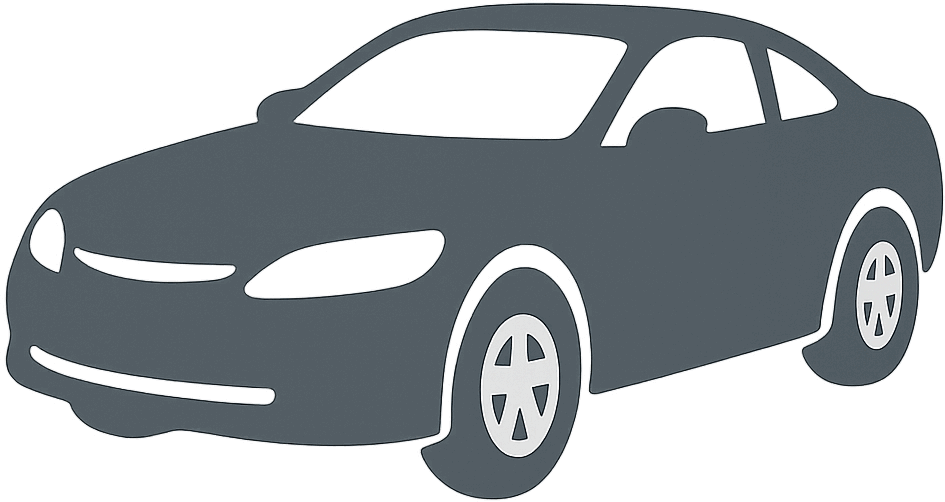 1996 TVR Cerbera Dimensions, Size & Specs
1996 TVR Cerbera Dimensions, Size & Specs
Measurements of the 1996 TVR Cerbera, engineered for optimal performance and comfort
| Dimensions | |
|---|---|
| Length: | 4146-4280 mm163.2-168.5 in13.6-14.0 ft |
| Width: | 1860-1943 mm73.2-76.5 in6.1-6.4 ft |
| Height: | 1205-1220 mm47.4-48.0 in4.0-4.0 ft |
| Trunk Capacity: | 390 liter13.8 cu ft |
| Weight Specifications | |
| Curb Weight: | 1100-1130 kg2425-2491 lbs |
| Tire Specifications | |
| Tire Sizes: |
|
The TVR Cerbera was produced between 1995 and 2003, representing a distinctive British sports coupe known for its aggressive styling and performance capabilities. As a coupe, the Cerbera featured a length ranging from 4146 mm to 4280 mm (approximately 163 to 168.5 inches), offering a compact yet substantial footprint on the road. Its width varies between 1860 mm and 1943 mm (73.2 to 76.5 inches), giving it a wide stance that enhances stability and road presence. The height was relatively low, measuring between 1205 mm and 1220 mm (47.4 to 48 inches), emphasizing its sporty and aerodynamic profile.
The curb weight of the TVR Cerbera falls between 1100 kg and 1130 kg (about 2425 to 2491 pounds), reflecting a lightweight build that contributes to its agile handling and performance-oriented character. This makes it a relatively light coupe in its class, aiding in quicker acceleration and responsiveness.
In terms of practicality for a sports coupe, the Cerbera offers a luggage capacity of 390 liters (approximately 13.8 cubic feet), providing reasonable storage for its size, making it suitable for weekend getaways or everyday use.
The tire size options for the TVR Cerbera demonstrate its focus on performance and handling versatility: sizes range from 225/50 ZR16, 225/50 R16, 225/45 ZR16, 235/50 ZR16, 245/45 ZR16 to 225/70 ZR16 and 235/40 ZR17, allowing for different setups depending on driving preferences and conditions.
Overall, the TVR Cerbera (1995-2003) combines compact and purposeful dimensions with a lightweight structure and performance-focused features, making it a standout British sports coupe of its era. Its size and weight characteristics position it well among other iconic coupes, delivering a thrilling driving experience without compromising essential practicality.
Discover the standout features that make the 1996 TVR Cerbera a leader in its class
Have a question? Please check our knowledgebase first.
The TVR Cerbera, produced from 1995 to 2003, features a length ranging between 4146 mm (163.1 inches) and 4280 mm (168.5 inches), depending on the specific variant or model year. Its width varies from 1860 mm (73.2 inches) up to 1943 mm (76.5 inches), giving it a broad and muscular stance. The height of the vehicle is relatively low, ranging between 1205 mm (47.4 inches) and 1220 mm (48.0 inches), which contributes to its aerodynamic profile and sports car aesthetics. These compact yet aggressive dimensions emphasize the Cerbera’s focus on performance and style.
The curb weight of the TVR Cerbera ranges from 1100 kg (2425 lbs) to 1130 kg (2491 lbs), depending on the model and options. This relatively lightweight construction is a crucial factor in its dynamic driving experience, as a lower weight improves acceleration, braking, and handling characteristics. For a high-performance sports coupe, maintaining curb weight around this range helps the Cerbera deliver sharp agility and responsiveness on the road, enhancing the driver’s connection to the car and its surroundings.
The luggage capacity of the TVR Cerbera is 390 liters (approximately 13.8 cubic feet), which offers a reasonable amount of space for a sports coupe. This capacity allows owners to store a decent amount of luggage or groceries, making it suitable for weekend trips or short travels. While it may not match the storage space of larger vehicles or sedans, the Cerbera's luggage room is competitive for a car focused on performance. Owners should consider this capacity when planning longer journeys, but it generally supports typical daily driving needs.
Given its dimensions, the TVR Cerbera generally fits into a standard residential garage. Typical single-car garages have interior widths of about 2.4 to 3.0 meters (7.9 to 9.8 feet) and lengths from 5.0 to 6.0 meters (16.4 to 19.7 feet). The Cerbera's width ranges up to 1.943 meters (76.5 inches, approximately 6.4 feet), and its length maxes out at around 4.28 meters (168.5 inches, approximately 14.0 feet), which comfortably fits within these averages. Owners should still measure their specific garage dimensions to ensure ample space for door operation and maneuvering, especially for garages on the narrower side.
The TVR Cerbera succeeded previous TVR models like the Griffith and the Chimaera, which were generally slightly smaller and lighter. Compared to these predecessors, the Cerbera grew modestly in overall length and width, offering a more spacious and stable platform while maintaining low height for better aerodynamics and sporty behavior. This increase in size was mainly to accommodate more powerful engines and enhanced safety features while improving driver and passenger comfort. The Cerbera’s dimensions thus represent an evolution toward a more modern and performance-oriented grand tourer approach.
With a width ranging from 1860 mm (73.2 inches) to a maximum of 1943 mm (76.5 inches), the TVR Cerbera commands a significant road presence. This wide stance not only gives it an assertive look but also contributes to excellent stability and grip during cornering. The broader track allows for better weight distribution and handling performance, especially at high speeds or during spirited driving. However, its width can make navigating tight urban spaces or narrow roads more challenging, although it remains manageable for most drivers familiar with sports cars.
The TVR Cerbera offers a variety of tire sizes including 225/50 ZR16, 225/50 R16, 225/45 ZR16, 235/50 ZR16, 245/45 ZR16, 225/70 ZR16, and 235/40 ZR17. These tires vary in diameter, width, and sidewall height, impacting the car’s ride comfort, grip, and handling sharpness. Wider tires like 245/45 ZR16 provide enhanced road contact, boosting cornering stability and braking performance. Conversely, higher profile tires such as 225/70 ZR16 might offer a more comfortable ride by absorbing road imperfections better but could slightly reduce responsiveness. The choice of tires allows owners to tailor performance characteristics to their driving style.
The TVR Cerbera competes with performance coupes from the same era such as the Porsche 911 (996) and the Jaguar XK8. Dimensionally, the Cerbera is slightly smaller in length compared to these rivals but wider than some, emphasizing its aggressive stance. Weighing between 1100 to 1130 kg, it's considerably lighter than many competitors, contributing to its sharp handling and brisk acceleration. While the Cerbera may lack some refinement found in German or British counterparts, it stands out for its raw performance, unique design, and driver-focused dynamics, giving it a distinct niche in the 1990s and early 2000s sports car market.
The TVR Cerbera’s height ranges between 1205 mm (47.4 inches) and 1220 mm (48.0 inches), representing a low-slung sports coupe profile. This low height significantly enhances aerodynamics, helping to reduce drag and improve high-speed stability. From a driver’s perspective, the lower seating position may limit outward visibility, especially over taller vehicles or in crowded urban environments. However, this design choice prioritizes performance and handling over everyday practicality, appealing to driving enthusiasts who value aerodynamic efficiency and road feel.
The curb weight of the TVR Cerbera spans from 1100 kg (2425 lbs) to 1130 kg (2491 lbs), with minor variations arising from different engine options, trim levels, or optional equipment. These differences can slightly affect fuel efficiency—lighter variants generally offer better mileage due to less mass requiring propulsion. In terms of handling, a lower curb weight improves agility, responsiveness, and the car’s ability to change direction swiftly. Although the variance is modest, buyers focusing on optimal performance might prioritize the lighter models for an even sharper driving experience, while those seeking more comfort or features might accept a bit of extra weight.
